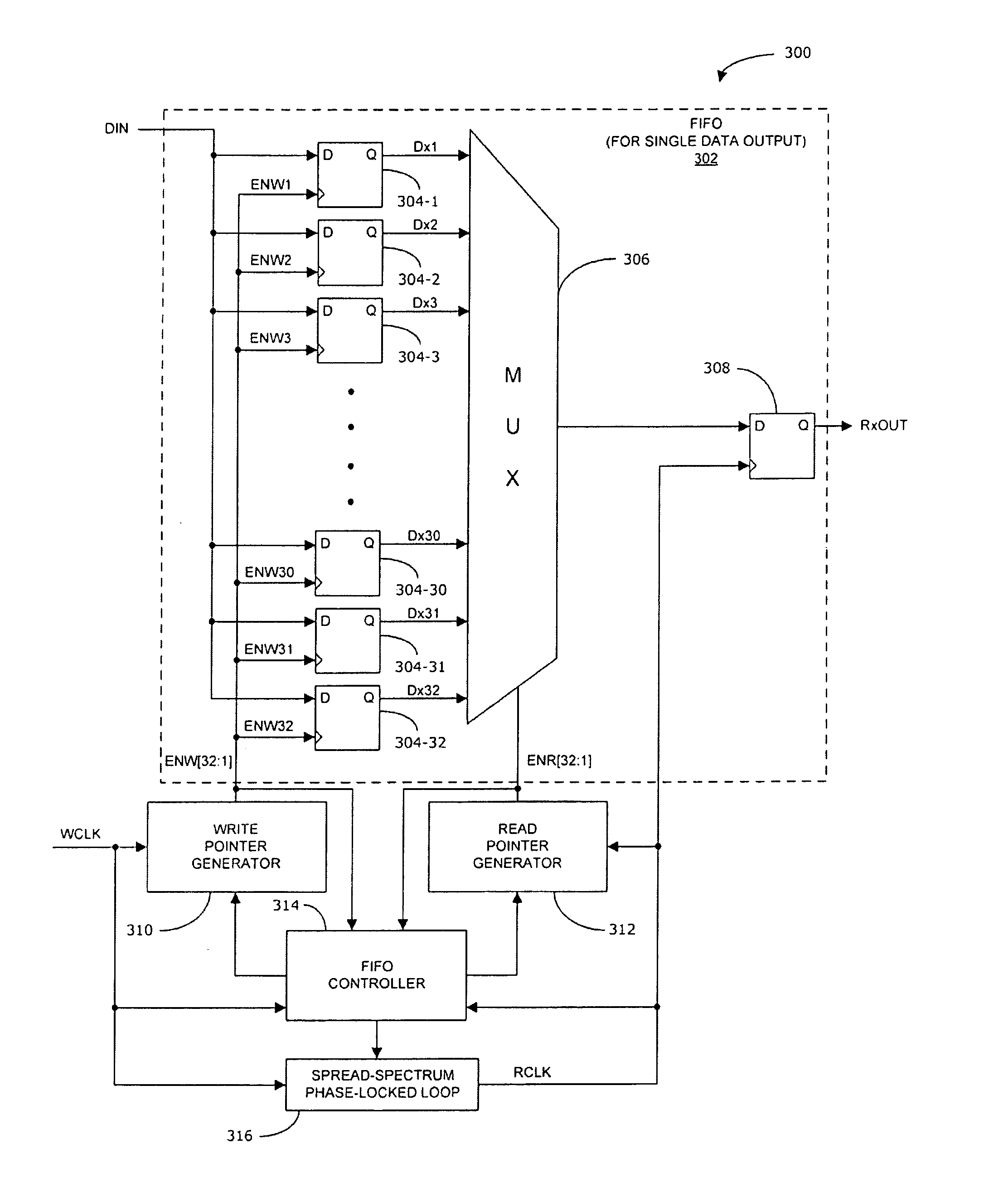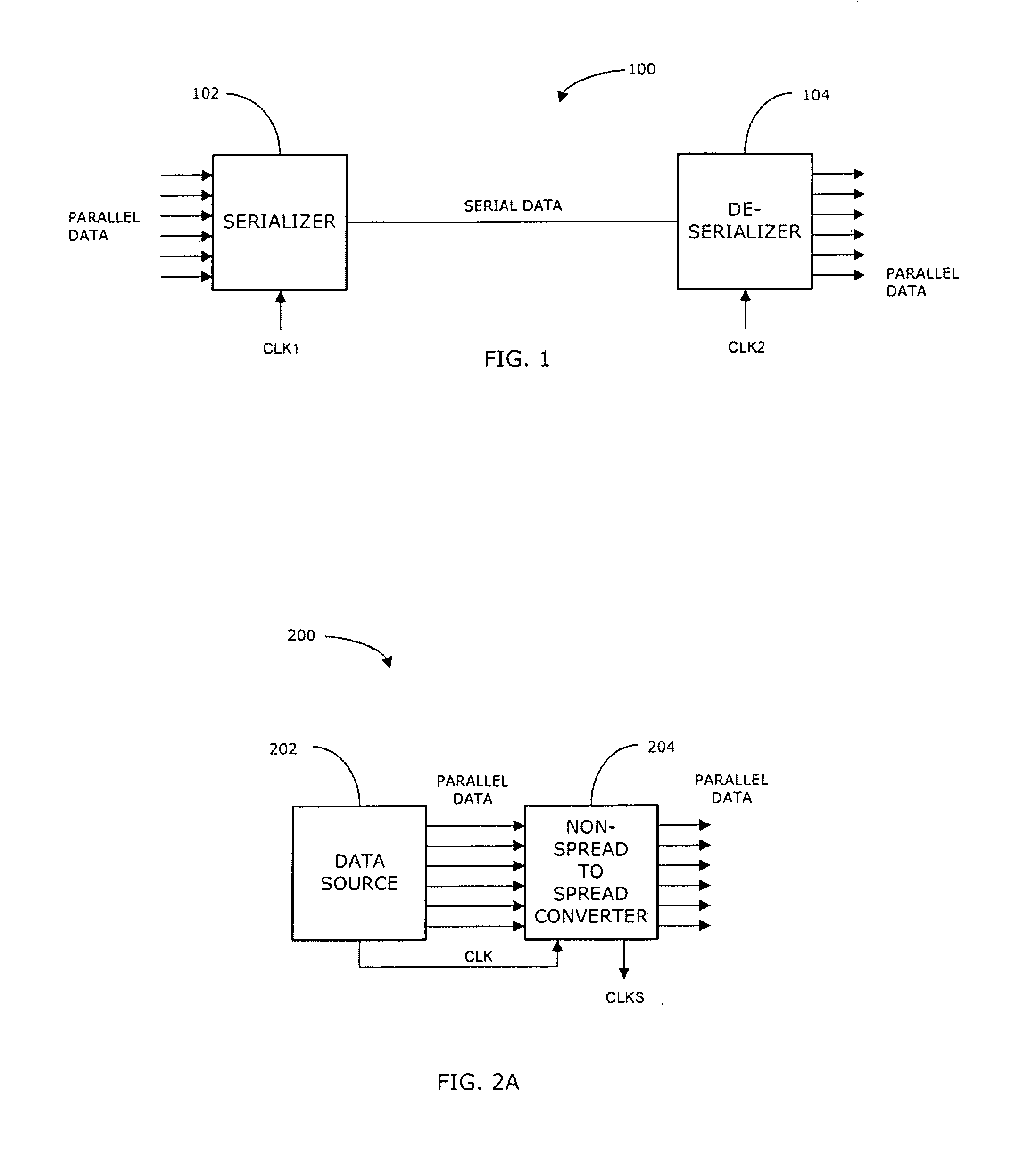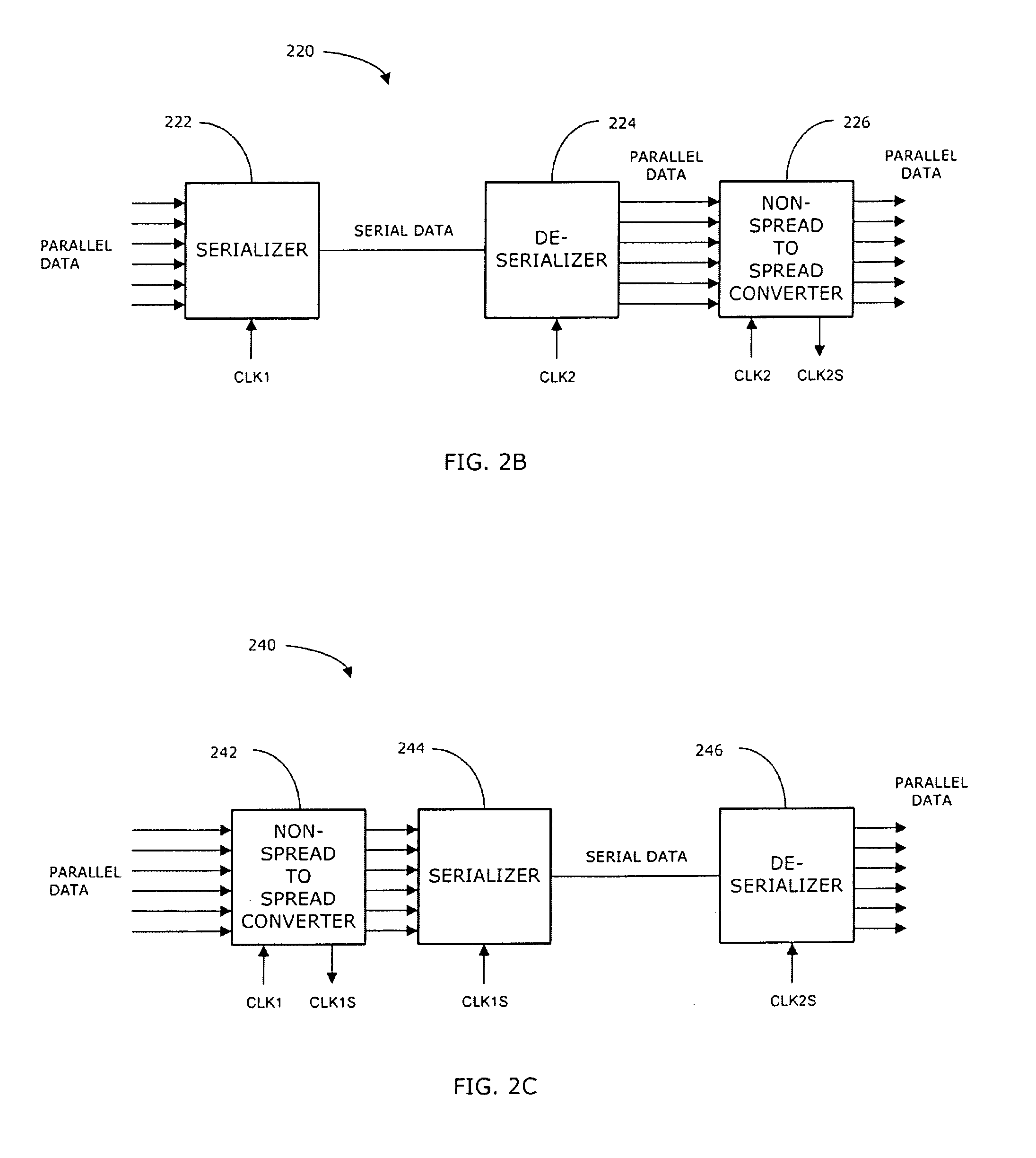System and method for transferring data from non-spread clock domain to spread clock domain
a technology of data transfer and spread clock, applied in the field of data transfer systems, can solve the problems of substantially affecting other components operating in proximity to the deserializer, electromagnetic interference (emi) problems, and emi emission at that particular frequency
- Summary
- Abstract
- Description
- Claims
- Application Information
AI Technical Summary
Benefits of technology
Problems solved by technology
Method used
Image
Examples
Embodiment Construction
[0023]FIG. 2A illustrates a block diagram of an exemplary communication system 200 in accordance with another embodiment of the invention. In summary, the communication system 200 is particularly suited for reducing electromagnetic interference (EMI) by converter data in a non-spread domain to a spread domain. In particular, the communication system 200 comprises a data source 202 and a non-spread to spread converter 204. The data source 202 generates parallel data and transfer the data to the converter 204 using a substantially constant frequency (non-spread) clock signal CLK.
[0024]The converter 204, in turn, using the non-spread clock signal CLK to receive or clock in the parallel data. The converter 204, in turn, generates a frequency-modulated (spread) clock signal CLKS from the non-spread clock signal CLK. The converter 204 uses the spread clock signal CLKS to clock out the parallel data. Because the spread clock CLKS clocks out the parallel data, the energy of the output paral...
PUM
 Login to View More
Login to View More Abstract
Description
Claims
Application Information
 Login to View More
Login to View More - R&D
- Intellectual Property
- Life Sciences
- Materials
- Tech Scout
- Unparalleled Data Quality
- Higher Quality Content
- 60% Fewer Hallucinations
Browse by: Latest US Patents, China's latest patents, Technical Efficacy Thesaurus, Application Domain, Technology Topic, Popular Technical Reports.
© 2025 PatSnap. All rights reserved.Legal|Privacy policy|Modern Slavery Act Transparency Statement|Sitemap|About US| Contact US: help@patsnap.com



